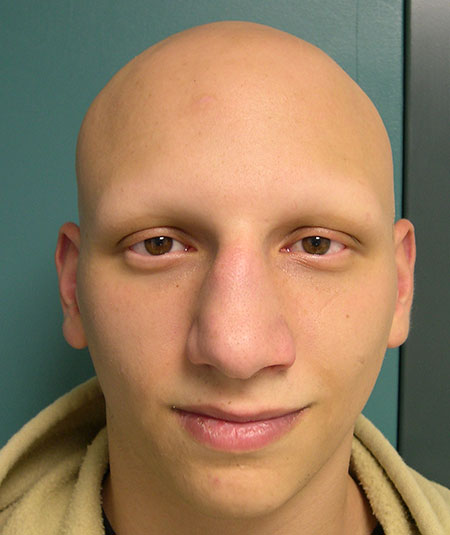A member of the group of hair loss conditions called alopecia areata, the only difference between alopecia universalis and its variants is the extent of hair loss.

What is Alopecia Universalis?
Normally, sufferers are otherwise healthy, but are more likely than the general population to experience thyroid disease and vitiligo (patchy loss of skin color). Those with vitiligo may eventually develop Alopecia Universalis over time. Many individuals with Alopecia Universalis are born with some hair but begin losing it very quickly.
The disorder is inherited as an autosomal recessive trait. It is caused by a mutation in a gene dubbed HR in chromosome band 8p21.2 — the human version of the gene that is responsible for hairlessness in mice.
Is the “hairless” gene only found in people with alopecia universalis? Most likely. Based on the known research, we can safely assume that only individuals with this rare and severe form of alopecia areata carry the gene. Unfortunately, there have not been enough studies to verify that this is true of all those afflicted. Aside from genetic tendencies, the contributing causes of Alopecia Universalis are not known.
As lack of body hair leaves areas like the scalp, eyes and nasal cavity particularly vulnerable, it is important that those with Alopecia Universalis take extra care to protect themselves from the sun, bacteria and other potentially harmful elements.
Alopecia Universalis may be acute and short-lived or remain permanently. Regrowth is always a possibility, even for those with 100% hair loss over many years. However, it is not possible to predict when regrowth will occur.
Can Alopecia Universalis be treated?
Yes. For more information, please see our Alopecia Treatment page, our case studies and our gallery.
